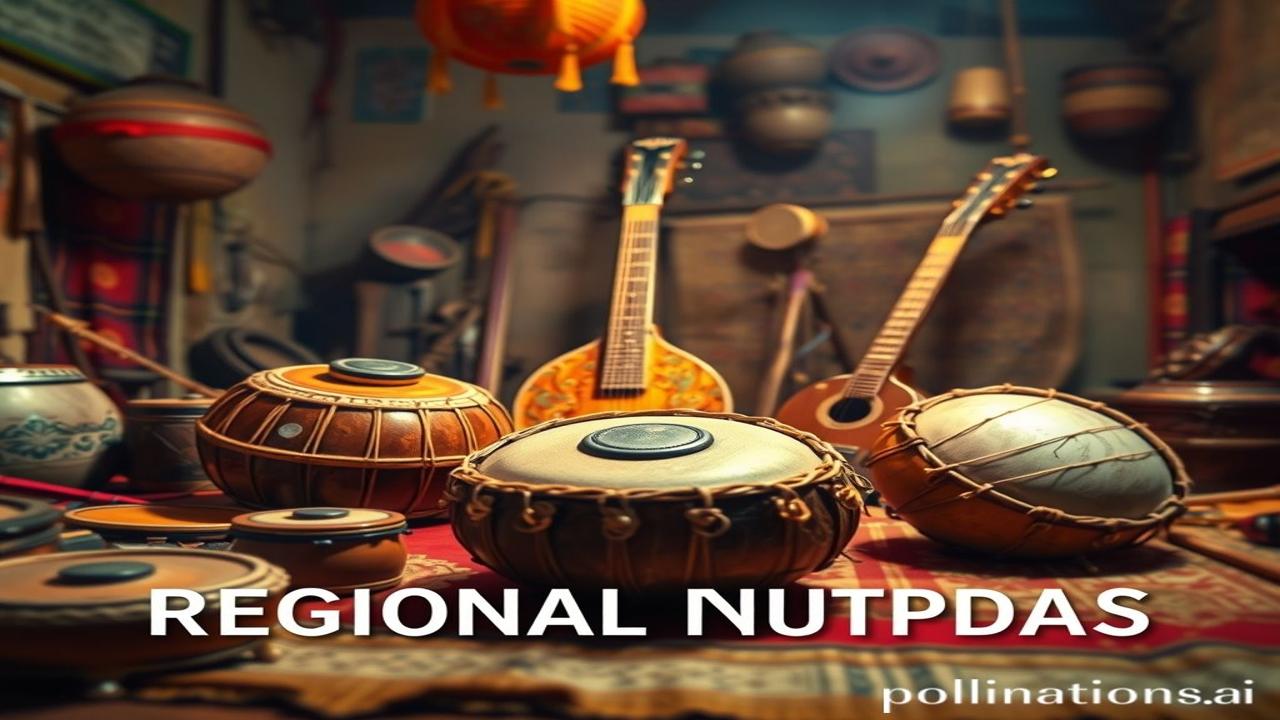Dhun Suno, Kahani Suno: Journey Through India’s Regional Musical Instruments
Kabhi socha hai, sangeet sirf sur nahi, ek sanskriti bhi hai? Music isn’t just melody; it’s a heritage, a story whispered through generations. Aaj hum explore karenge India ke un regional musical instruments ko, jo sirf aawaz nahi, itihaas bhi sunate hain. Chalo chalein ek safar par, jahan dhun mein dastaan chhupi hai!
Sangeet Ki Jad: The Roots of Indian Music
India, a land brimming with diversity, echoes with a symphony of regional musical instruments. These aren’t just tools to create music; they are repositories of history, culture, and tradition. From the vibrant rhythms of the Dhol in Punjab to the soulful strains of the Sarangi in Rajasthan, each instrument tells a unique tale.
But where did this all begin? The origins are ancient, dating back thousands of years. Archaeological evidence from the Indus Valley Civilization (c. 3300-1700 BCE) suggests the existence of musical instruments. The Vedas, some of the oldest texts in the world, mention instruments like the Veena and the Dundhubhi. Sangeet, kala (art), aur dharma (righteousness) hamesha se judey hue hain, aur yeh musical instruments us connection ka pramaan hain. These instruments were often linked to religious rituals and social gatherings, playing a pivotal role in the lives of the people.
The When and Where: A Region-Wise Glimpse
-
Punjab: The Dhol’s Energetic Beat: Think bhangra, think celebration, think Dhol! Its origins are shrouded in history, but it’s deeply woven into Punjabi culture. It’s the heartbeat of every festival, every wedding, every joyous occasion.
-
Rajasthan: The Sarangi’s Soulful Cry: The Sarangi is more than just an instrument; it’s a storyteller. Its mournful tones narrate tales of love, loss, and longing in the deserts of Rajasthan. The Langa and Manganiyar communities have kept this tradition alive for centuries.
-
South India: The Veena’s Divine Resonance: The Veena, often associated with the goddess Saraswati, is the queen of Carnatic music. Its origins can be traced back to ancient India. It’s believed that playing the Veena brings peace and enlightenment.
-
North-East India: The Djembe’s Tribal Rhythms: The North-East’s diverse tribal communities boast an array of unique percussion instruments, like the Djembe. These drums are used in traditional dances and rituals, connecting people to their ancestral roots and nature.
Zameeni Sach: A Day in the Life of a Sarangi Maker
Imagine stepping into the workshop of Ustad Ghulam Ali, a Sarangi maker in Jodhpur. The air smells of wood, resin, and sweat. Tools lie scattered around – chisels, hammers, files. He carefully selects a block of khejri wood, the desert’s sturdy tree, for the body of the Sarangi.
“Yeh Sarangi sirf lakdi nahi hai, beta,” Ustad Ghulam Ali says, his voice raspy from years of singing and crafting. “Yeh toh meri rooh ka hissa hai. I put my heart and soul into each instrument.”
He spends days, sometimes weeks, meticulously shaping the wood, carving the intricate designs, and fitting the strings. He remembers his grandfather, who taught him the craft, passing down generations of knowledge and skill.
“Ma Rukmini ne aaj naye kapde pehne, kyunki mandir mein utsav tha… Us utsav mein, meri Sarangi ki dhun bajti hai, logo ke dilo mein.” His music connects people, weaving stories into their lives, just like his ancestors did.
Dharohar aur Pehchaan: Cultural Significance Today
Even in today’s world of electronic music and global influences, these regional musical instruments continue to resonate. They are a vital part of India’s cultural fabric, representing the diversity and richness of our heritage. They feature prominently in classical performances, folk festivals, and even contemporary fusion music.
Think about the Coke Studio sessions featuring folk musicians playing the Dhol or the Sarangi. This fusion bridges the gap between tradition and modernity, showcasing the enduring power of these instruments. The resurgence of interest in traditional music is a testament to the deep connection people feel to their roots, their Bharatiyata.
Mazedar Tathya ya Bhram-Bhanjak: The Myth of the Perfect Pitch
Log samajhte hain ki har instrument bilkul perfect pitch mein hona chahiye… lekin asli sach yeh hai ki, the slight imperfections, the subtle variations in tone, are what give each instrument its unique character and soul. It’s the human element, the imperfections that make it beautiful. Even the weather can impact an instrument’s tuning!
Visual aur Bhavnayein: The Sounds and Sights of a Folk Performance
Imagine yourself sitting under a starlit sky in a Rajasthani village. The air is thick with the smell of spices and wood smoke. You can feel the warmth of the sand beneath you. The sound of the Sarangi fills the air, its mournful notes weaving tales of bravery and love. The dancers twirl in vibrant colors, their movements echoing the rhythms of the music. The laughter and applause of the audience create a sense of community and belonging. It is this symphony of sights, sounds, and emotions that makes India’s regional music so captivating.
Antim Vichar ya Uddharan: The Enduring Power of Music
These regional musical instruments are more than just tools for creating music; they are living embodiments of our history, culture, and traditions. They are a testament to the enduring power of music to connect us to our past, our present, and our future.
“Sangeet aatma ko shanti deta hai,” as they say. May the music continue to inspire and unite us, carrying the echoes of our heritage for generations to come.
“सुर में ही बसेरा है, सुर में ही किनारा है।” (The abode is in the melody, the shore is in the melody.)
